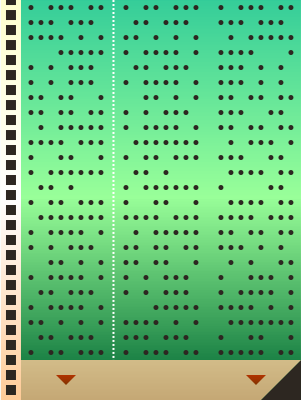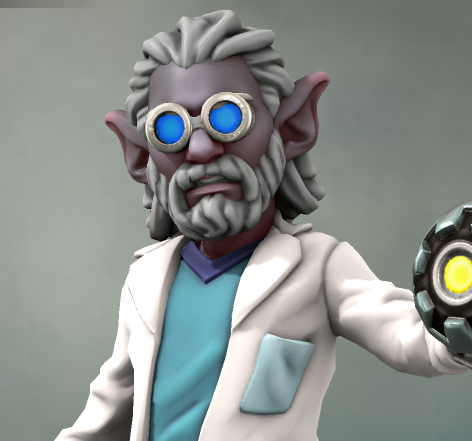2022 After Summer Camp Reading List
Introduction
Howdy folks! Summer Camp 2022 is now done and dusted, and that means it's once again time for the follow-up reading challenge. You can find the prompt for this challenge by clicking here. The gist is that I will be discussing three submissions each from three separate challenge categories - discussing what I can learn from each article - before going a little bit into what I plan to do now that Summer Camp is over. Without further ado, let's get started!Category I
The first category I'm interested in looking at is "Somewhere in your setting, describe a military conflict resolved through excellent leadership." Military campaigns are a relevant element to both my Manifold Sky and Sealed Kingdoms setting, and the Conflict article template has great narrative hooks baked right into it.Article I
The Battle of Valdor's Pass by Scholarmage was interesting to me because, while it was a visually spare article, the action in the scene reminded me somewhat of battles I remember reading about in historical acconts, where part of the success of the mission hinged on making the enemy thing that there were more soldiers in the enemy formation than there actually were. The writing here is to the point and has bits of information about the world baked in that help the reader not be completely lost. I need to develop this level of pithyness for my own writing, as I've heard that my more complex articles can be hard to follow for lack of integration with the world.
Article Ib
I find SoulLink's article about the Second Adirondack War interesting because, unlike a lot of similar entries (including my own), the article contains a concise timeline of the events involved in the conflict. While I would normally feel that an official World Anvil timeline widget would be a better approach, setting it up as a table is a nice touch because it puts the timeline front-and-center rather than behind a tab in the footnotes.
I would probably use an article like this in my own writing as a basic skeleton upon which to build a mystery/suspense story, as we never discover the exact identities or motives of the true killers.
Article Ic
Kefkejaco's article about the Pavan Independence Wars is another article I like because of the way it handles the progression of time relative to events in the broader setting. The Pavan Independence Wars clearly establishes the circumstances of the war and the parties involved in the context of the greater world; there's no question in my mind that the events of the wars are plausible within the setting and occur over a period of time that would make for interesting storytelling without being unnaturally protracted given the rules of the setting. I can also see how the events of the conflict would have a profound impact on the setting going forward, which heightens the sense of narrative progression.
One of the places that I know my settings can use improvement is in the reasonable progression of historical events, which the Pavan Independence Wars does well. While it might be plausible for things to take longer than expected to develp in the Manifold Sky setting, for example, I sometimes wonder if holding relevant technologies like dieseltech static in the world for a prolonged period of time might break immersion in the way that magic might break immersion in a hard science fiction setting.
Category II
The second category I'm looking at is "An ocean, desert, plain, pocket dimension, or other large expanse." I enjoy environmental storytelling and generally like work inwards from a unique region, world, or setting premise when I write, so I was interested to see what people had done in this vein.Article IIa
Angantyr's article on Augmented Reality is less interesting to me because of its construction than it is because of the concept behind it. I think it's a really creative idea to treat a digital space as an expanse unto itself, and I'm not just talk about this because I happen to have a setting - the Matrioshka Multiverse - that does something similar. I'm really not sure what else to say about this one other than I find it intriguing and could see how the concept of people messing with a shared digital space would make for an interesting story.
Article IIb
I'm not gonna lie - I decided to include
SailingOcelot's article about The Mid-Summer Sea mostly because I like the tropical vibes and because I find the idea of monkeys learning to surf too creative to pass up. I like the fact that the article tangentially gets into the spiritual and linguistic customs of the region, as those are some of the article types I like to read and write about myself.
Article IIc
I liked the ecological and cultural details presented in the Sea of the Doomed article by Callyxtus, and the map in the middle was a nice touch. This article does a good job of portraying how the region plays into the history of the desert elves and makes it feel like there's a lot more going on with this region than just some patch of sand out there in the wilderness. I tend to do my own worldbuilding based on setting and geography first, with culture and characters flowing from that, but it feels like the Sea of the Doomed approaches the issue from the opposite direction. I'll have to experiment with this type of writing myself in the future.
Category III
A compelling protagonist can make or break a story. To this end, the third category I explored was "Somewhere in your setting, describe a person considered villainous or monstrous."Article IIIa
I'm always interested in situations where spirituality and technology coalesce. Mirrond's Ancient of Cogs is an interesting take on deity whose presence is formed by a combination of human evil augmented by advancements in industry and technology - sort of a more darker, more modern take on the Omnisaiah from WH40k lore. Reading this makes me want to expand the lore of certain religions in my settings to include contemporary concepts like industry, especially as several of them (i.e. Rostran Esotericism) are open to such developments.
Article IIIb
Dahlia Crimson Needle by ArachCobra interested me because she exhibits the wide-ranging, eclectic skill sets exhibited by characters in classical demonology. I would normally consider an overarching theme that ties all abilities together to be an important part of making a consistent and believable character, but doing this with Dahlia helps sell the reader on the idea that she is an actual demon in the world of Shattered Age.
I also like that fact that her character generates conflict and the potential for 'Faustian pact" type stories by its very nature. Another character might fear Dahlia for her villainy and martial prowess, but might also need to call upon her for the skills she can offer - for the right price, of course. Pacts and the power of words are recurring themes in my own fantasy-oriented writing, so I might have to borrow this concept for future articles about supernatural entities.
Article IIIc
The Victor vo Bakinstein article presented by EmilyArmstrong is a fun, fantastical twist on the traditional Dr. Frankenstein story. Thematic amusements aside, I like the unique CSS and use of generative art to give the article a unique look. The concept of this article reminds me of that D&D 3.5 mini-adventure What's That Smell? where an expert chef and his arcanist wife create a calzone golem that ultimately runs amok when she's away on business. I want to infuse some of this sort of whimsy into my Tales of the Transmuter articles.
Future Plans
Once judging for Summer Camp as a challenge is over, I intend to go back over some of the more salient articles to edit, expand, and decorate them in greater detail. Further mentions and tooltips will need to be added for the sake of clarity, as I sometimes get comments that my articles can be hard to follow for those not already initiated in the setting. I feel like doing this will help me develop the crucial quality of conciseness as well; I know I tend to resort to purple prose when I don't have a way to explain something better, and this would not be good for future publishing prospects. A little later in the year, I am hoping to participate in NaNoWriMo and WorldEmber in keeping with my New Year's Resolutions. We're far enough along in the year that I'm not expecting my pledge to get a full manuscript out to be fulfilled, but I can still make progress towards my wordcount and challenge goals. At least a couple of the articles I made during Summer Camp '22 are directly related to what I want to write, such as the encounter between the Revelation and the High Shale in the Sealed Kingdoms setting. I'll hopefully also find the time to go over the BCGR rules with an eye towards editing. The system is essentially in its final state, but I need to decide on what, if any, 'soft' tabletop RPG content needs to go in there - sample characters, adventure building advice, and that kind of game-adjacent stuff that most major RPG works include. I may decide to create a 'Core' and 'Lite' version of the final document so that experienced roleplayers don't have to slog through all the stuff they already know about tabletop roleplaying in general. Rule books are notoriously dry; if any of you have tried to read the D&D Player's Handbook or a similar tome from front-to-back, rather than skimming for what you actually intend to use in a given session, you know exactly what I mean. Lastly, I've been using some of my time between work and writing to try and learn Blender and C# to potentially create interactive content for the Manifold Sky setting in particular. This might include interactive character sheets in the intermediate- to long-term future, but the first real project I've been working on is a simple little Vyozha game. Some of the new art assets for that game will be making their way into articles and (potentially) the Tabletop Simulator version, including new and improved card faces and a decorative 'first card' token. There's no set finish date on all of this, though, so just keep an ear out for news on that front if (when) something comes out.Conclusion
That's really all I have for you in this article. I'm glad I got to read a bunch of interesting and unique content for this challenge. Here's hoping you all have a fun, healthy, and productive remainder of the year! Regards, BCGR_Wurth
My Summer Camp 2022 Entries
Previous Reading List Entries








Great choices! I haven't checked out "The Mid-Summer Sea" yet, so I'm off to do that. And I love that you included Victor von Bakinstein. Culinarypunk is my new favorite world on World Anvil.